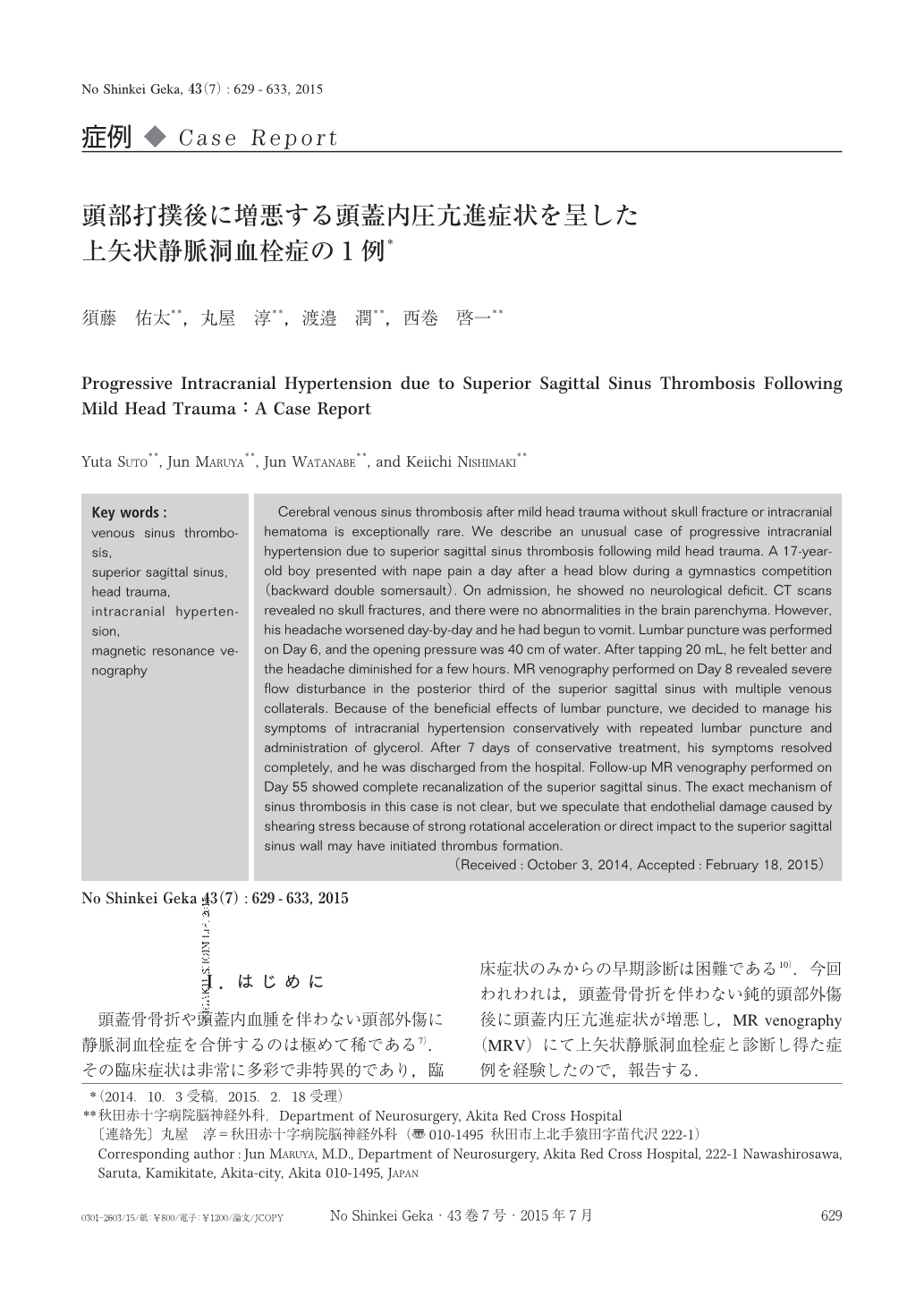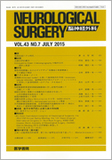Japanese
English
- 有料閲覧
- Abstract 文献概要
- 1ページ目 Look Inside
- 参考文献 Reference
Ⅰ.はじめに
頭蓋骨骨折や頭蓋内血腫を伴わない頭部外傷に静脈洞血栓症を合併するのは極めて稀である7).その臨床症状は非常に多彩で非特異的であり,臨床症状のみからの早期診断は困難である10).今回われわれは,頭蓋骨骨折を伴わない鈍的頭部外傷後に頭蓋内圧亢進症状が増悪し,MR venography(MRV)にて上矢状静脈洞血栓症と診断し得た症例を経験したので,報告する.
Cerebral venous sinus thrombosis after mild head trauma without skull fracture or intracranial hematoma is exceptionally rare. We describe an unusual case of progressive intracranial hypertension due to superior sagittal sinus thrombosis following mild head trauma. A 17-year-old boy presented with nape pain a day after a head blow during a gymnastics competition(backward double somersault). On admission, he showed no neurological deficit. CT scans revealed no skull fractures, and there were no abnormalities in the brain parenchyma. However, his headache worsend day-by-day and he had begun to vomit. Lumbar puncture was performed on Day 6, and the opening pressure was 40cm of water. After tapping 20mL, he felt better and the headache diminished for a few hours. MR venography performed on Day 8 revealed severe flow disturbance in the posterior third of the superior sagittal sinus with multiple venous collaterals. Because of the beneficial effects of lumbar puncture, we decided to manage his symptoms of intracranial hypertension conservatively with repeated lumbar puncture and administration of glycerol. After 7 days of conservative treatment, his symptoms resolved completely, and he was discharged from the hospital. Follow-up MR venography performed on Day 55 showed complete recanalization of the superior sagittal sinus. The exact mechanism of sinus thrombosis in this case is not clear, but we speculate that endothelial damage caused by shearing stress because of strong rotational acceleration or direct impact to the superior sagittal sinus wall may have initiated thrombus formation.

Copyright © 2015, Igaku-Shoin Ltd. All rights reserved.


